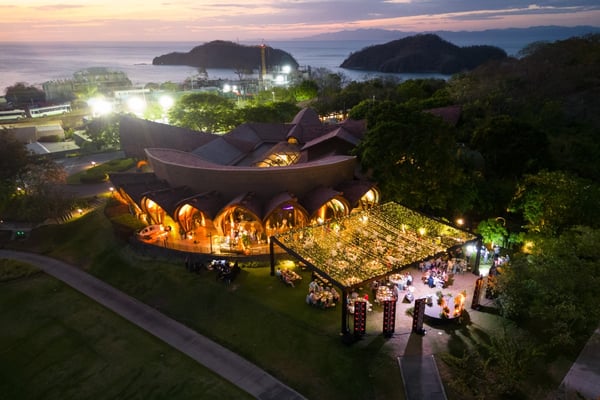We’ve reached a critical point in the year when companies are looking ahead and planning for the upcoming year. For businesses such as event planning, this involves reflecting on our experiences and insights. When it comes to IMEX, one of our key focus areas is always trends in the incentive travel industry.
The good news is incentive travel continues to evolve and gain strategic importance as companies face new and varied workforce challenges. This expansion of perspective regarding the numerous benefits of incentive travel is great news for the future of the industry. In fact, by the end of this year, global business travel spending is expected to reach $1.48 trillion. And by 2028, we’re expecting to see this jump to $2.0 trillion.
With this information and the desire to help businesses build successful incentive programs, the Incentive Research Foundation (IRF) and the Society for Incentive Travel Excellence (SITE) conduct a yearly Incentive Travel Index study. This year, I had the opportunity to join a panel discussion on the Incentive Travel Index at IMEX America 2024, and I’d like to share a few key takeaways that I found interesting.
Quick Links
- Factors Influencing Change in Incentive Travel
- Insights from the Incentive Travel Index
- Challenges Impacting Incentive Travel Programs
- Working with Event Planners for Better Incentive Travel Experiences
Factors Influencing Change in Incentive Travel
The goal of the Incentive Travel Index is to reflect on what’s working for incentives and highlight what trends we can expect to see as we head into a new year. Similarly to previous years, incentive travel programs include two primary categories of benefits – hard and soft – each of which has very specific returns.
While “hard” benefits reign supreme in North America, the “soft” benefits are growing in importance, suggesting more organizations will be designing incentive programs focused on driving both hard and soft benefits. However, more than half of buyers are planning to shift their future programs to focus more heavily on soft power benefits, which include strengthening company culture and boosting engagement and relationships.
The study found that 24% of respondents believe senior management sees incentive travel as an integral part of a total rewards package, on par with other common benefits like cash bonuses or wellness programs. However, a more significant 41% of respondents indicated that senior management recognizes that traditional rewards, such as cash bonuses, may fall short in driving engagement or strengthening company culture. In contrast, incentive travel programs are seen as more effective in achieving both of these objectives, highlighting their unique value in motivating employees and reinforcing organizational values.
In addition, understanding attendee demographics is crucial to predicting the future of incentive travel, particularly with the rise of Gen Z and millennial workers entering the workforce and participating in these programs. We're already seeing a shift in incentive program design to better meet the needs and expectations of this new generation. In fact, the study reveals that 67% of respondents believe these younger workers will “cause a powerful retool of incentive travel.”

Insights from the Incentive Travel Index
Senior management increasingly recognizes the value of incentive travel, particularly in strengthening corporate culture and retaining top talent. Organizations that want to boost employee morale, attract and retain talent, foster a strong corporate culture, and build cohesive teams should integrate incentive travel programs into their overall workforce strategy. With this in mind, here are some key insights from this year’s Incentive Travel Index report that planners should consider when designing their programs.
Free Time
In last year’s Incentive Travel Index report, free time claimed eighth place among activities key to successful travel programs. This year, free time has jumped to fourth place and 65% of respondents consider it to be the most important factor of a successful incentive program in 2024.
Free time allows participants to engage in activities that genuinely interest them, creating a more customized and enjoyable experience. While planned events are important, it's crucial to recognize that attendees have diverse preferences – some may prefer exploring local culture, while others might seek more adventurous activities. Free time is a more “hands-off” approach that lets participants shape their experience according to their interests, making the trip feel more rewarding and personally meaningful. Our panel moderator and Chief Marketing Officer at SITE, Padraic Gilligan, reflected on this preference for unscheduled time and pointed to the societal shift in attendees valuing personal freedom as a key driver behind this change.
Free time also serves as an opportunity for informal networking and building deeper relationships among attendees. Without the constraints of structured sessions, participants can bond over shared interests or activities in a more relaxed setting, fostering authentic connections. So, some intentional downtime provides attendees with the flexibility needed to have an incentive experience that’s customized to their personal tastes.
Group Experiences
The top three most appreciated activities for incentives all include group elements, whether that’s dining, sightseeing, or generally improving relationships. With incentive trips, attendees not only have an opportunity to experience new destinations, but they also have the chance to build relationships along the way.
For instance, group dining is an effective way to create shared moments that lead to stronger team dynamics and can also serve as a backdrop for celebrating individual and team achievements. Meals, along with cultural activities and sightseeing tours, are not only enjoyable but also provide immersive, shared learning experiences. These activities encourage attendees to step out of their daily routines and experience something new together, which can deepen bonds and create unique memories.
Destination Selection
Attendees are always excited to learn more about the destinations they'll be visiting as part of an incentive program. This year’s Incentive Travel Report reflects a consistent trend seen in previous years when it comes to destination selection. 70% of buyers express interest in planning trips to new, unexplored destinations – a figure that mirrors last year’s report. This is where event planning agencies with expertise in incentive travel can truly stand out, offering valuable insights and unique experiences to meet these evolving preferences.
When Bishop-McCann plans incentive trips, the first question we normally get is, “Where can we go that we haven’t been to before?” While North American buyers are still interested in many of the same destinations as previous years, they’re beginning to focus their attention on unique locations that may not have been considered in previous years.
The next question after “Where should we go?” is almost always, “Can we afford to go there?” Ultimately, destination selection is heavily influenced by costs. Among the buyers surveyed in this study, 42% of respondents anticipate an increase in the use of all-inclusive resorts for incentive programs. When asked for the reasons behind this trend, 73% cited budget considerations. With rising costs across travel, accommodations, food and beverage, and other services, this shift is hardly surprising. With all-inclusives, planners are better able to control costs. We’re also noticing an increase in supply, making all-inclusives an ideal option for many buyers.
Remember, a well-designed corporate incentive program not only rewards employees but also strengthens team bonds, boosts morale, and promotes a positive company culture. Selecting the right destination is critical to creating an experience that is memorable and meaningful for your specific participants.

Challenges Impacting Incentive Travel Programs
While the future of incentive travel looks promising, it still presents a few challenges that planners must address. As new trends emerge, our focus is on navigating these obstacles to ensure we continue delivering engaging and memorable travel experiences.
Rising Costs
Even with senior management's support, many organizational leaders are still unsure about how to effectively plan and budget for incentive travel programs. Budgeting for these trips involves a range of factors, from setting pricing for specific dates to anticipating unexpected costs and identifying potential savings. With so many variables to consider, planning these programs can be challenging, even with full buy-in.
As noted above, in 2025, buyers expect rising costs for hotels, airfare, and food and beverage, driving the per-person spend for programs higher. By 2026, 55% of buyers anticipate adjusting their budgets to keep pace with inflation or to enhance program offerings. As many budgets remain stagnant and costs continue to rise, we're seeing changes in program design and destination selection to better accommodate these shifts in spending.
Attracting and Retaining Top Talent
It’s common for businesses to use incentive travel as a driving force behind attracting talent. An opportunity to be rewarded with an exciting trip to a new destination is a pretty enticing benefit. While these programs are designed to reward, motivate, and retain high-performing employees, evolving workforce expectations and competitive labor markets create obstacles.
For instance, millennial and Gen Z workers often value work-life balance, sustainability, and purpose-driven work over traditional incentives. Standardized, one-size-fits-all travel programs may not be as motivating to them as they would have been to previous generations of workers. For incentive travel programs to be effective in retaining talent, they need to resonate on a personal level.
Effectively Leveraging AI
Artificial intelligence (AI) is the latest buzzword in our industry – and many others. While it’s a powerful tool, we always want to ensure that events do not lose that crucial human touch. Still most organizers are not fully harnessing AI’s potential. There are, in fact, many ways AI can enhance incentive planning, from preparing program materials and managing budgets to facilitating live communications with participants.
Of course, adopting AI comes with a learning curve, but embracing new technologies can significantly improve event planning efficiency. In fact, 62% of respondents believe AI can be effectively used to prepare program materials. That said, there are still some barriers to widespread AI adoption. When asked about challenges, 68% of respondents felt that incentive travel requires too much personalization for AI to be effective, while 33% believed the complexity of incentive programs makes AI difficult to implement.
.jpg?width=600&height=400&name=2017_verizon_pres_club_wed_0313%20(1).jpg)
Working with Event Planners for Better Incentive Travel Experiences
When it comes to taking a holistic approach to your incentive travel program, which encompasses everything from selecting the perfect destination to meeting budgetary requirements, partnering with an experienced event planning agency like Bishop-McCann is incredibly beneficial. A dedicated agency brings deep industry knowledge and expertise, ensuring that all aspects of the program are thoughtfully planned and executed.
As many organizations begin budgeting and planning for upcoming trips, our team is actively in the field – traveling, exploring new destinations, and building key relationships. This hands-on approach allows us to uncover the best venues and experiences to help you create an exciting and unforgettable destination event for your attendees. We’re committed to ensuring that every detail is perfectly aligned with your goals, delivering an exceptional experience that leaves a lasting impact.
As corporate event planners with significant travel experience, including group air travel management and sourcing, we’re ready to help you plan. Get in touch with our team today, and let’s determine where you’re heading in the coming year and how you can get the most out of your incentive program!
